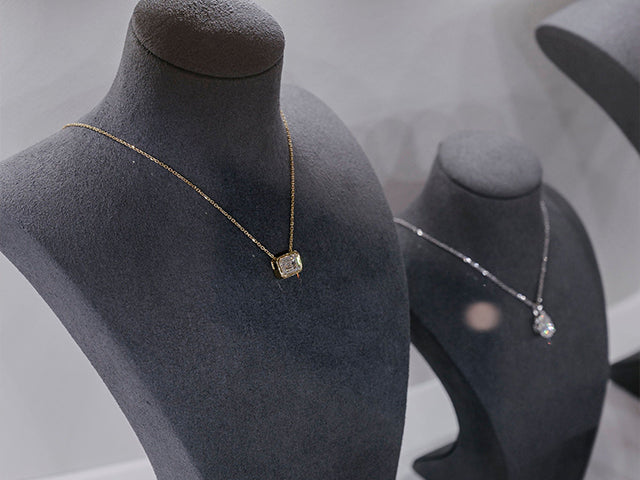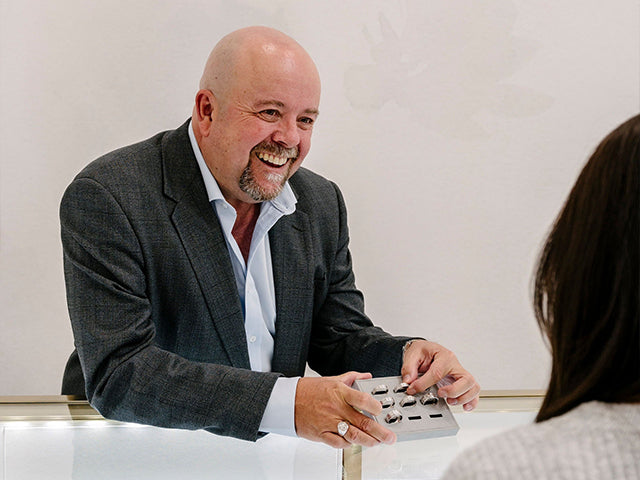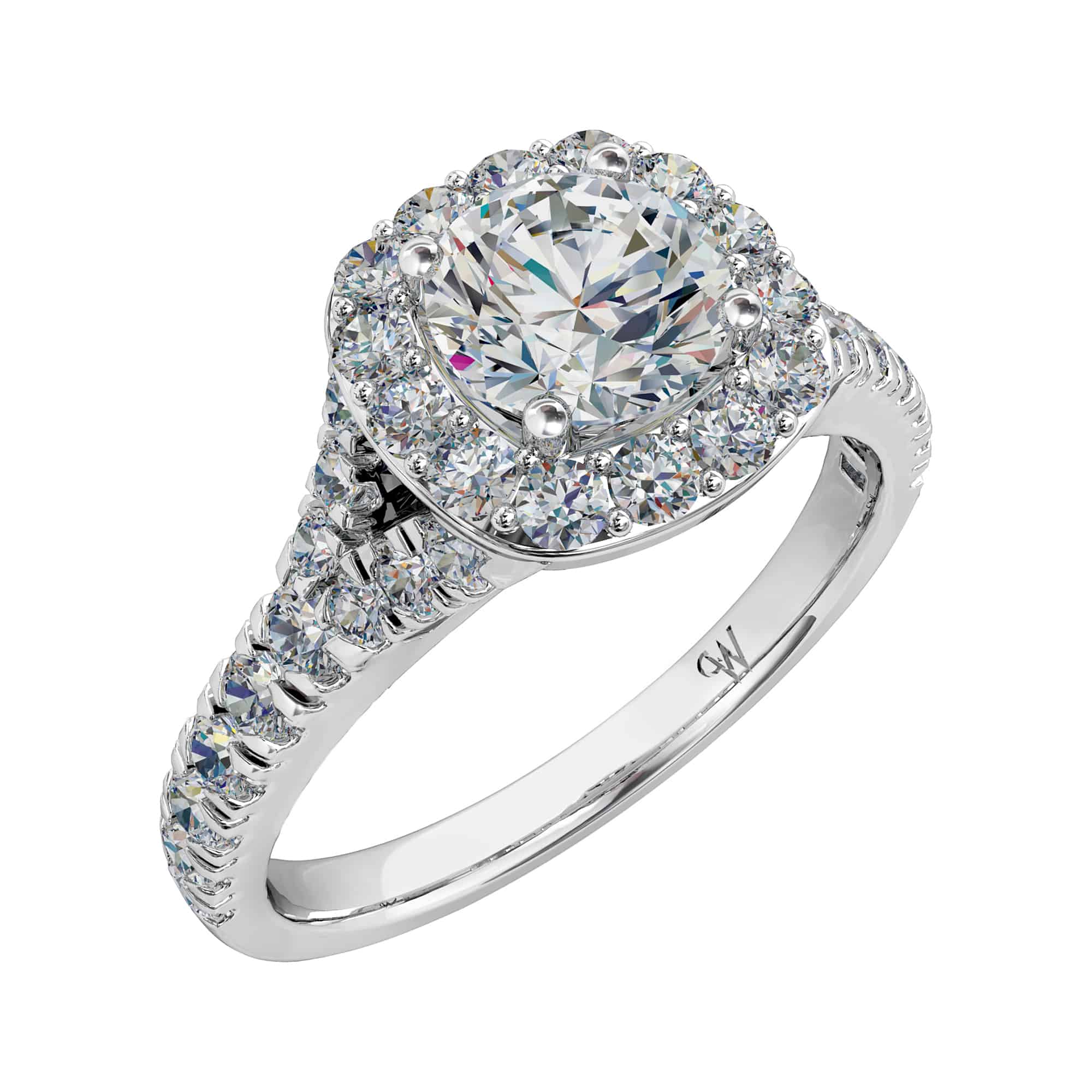
Diamonds grown with Technology not Geology
An Evolution Lab Grown Diamond is a grown over a 6-10 week period in highly-controlled laboratory conditions. The growing chamber simulates the exact conditions a mined diamond would undergo over thousands of years deep within the earth’s surface. To the naked eye, there is no difference between a mined and lab-grown diamond. Although they are grown under different conditions, they are identical in chemical, optical and physical composition.
Evolution Lab Grown Diamonds are typically 60–80% more affordable than their mined equivalent. This allows a consumer to choose either a much larger stone or a stone of much higher quality for the available budget.
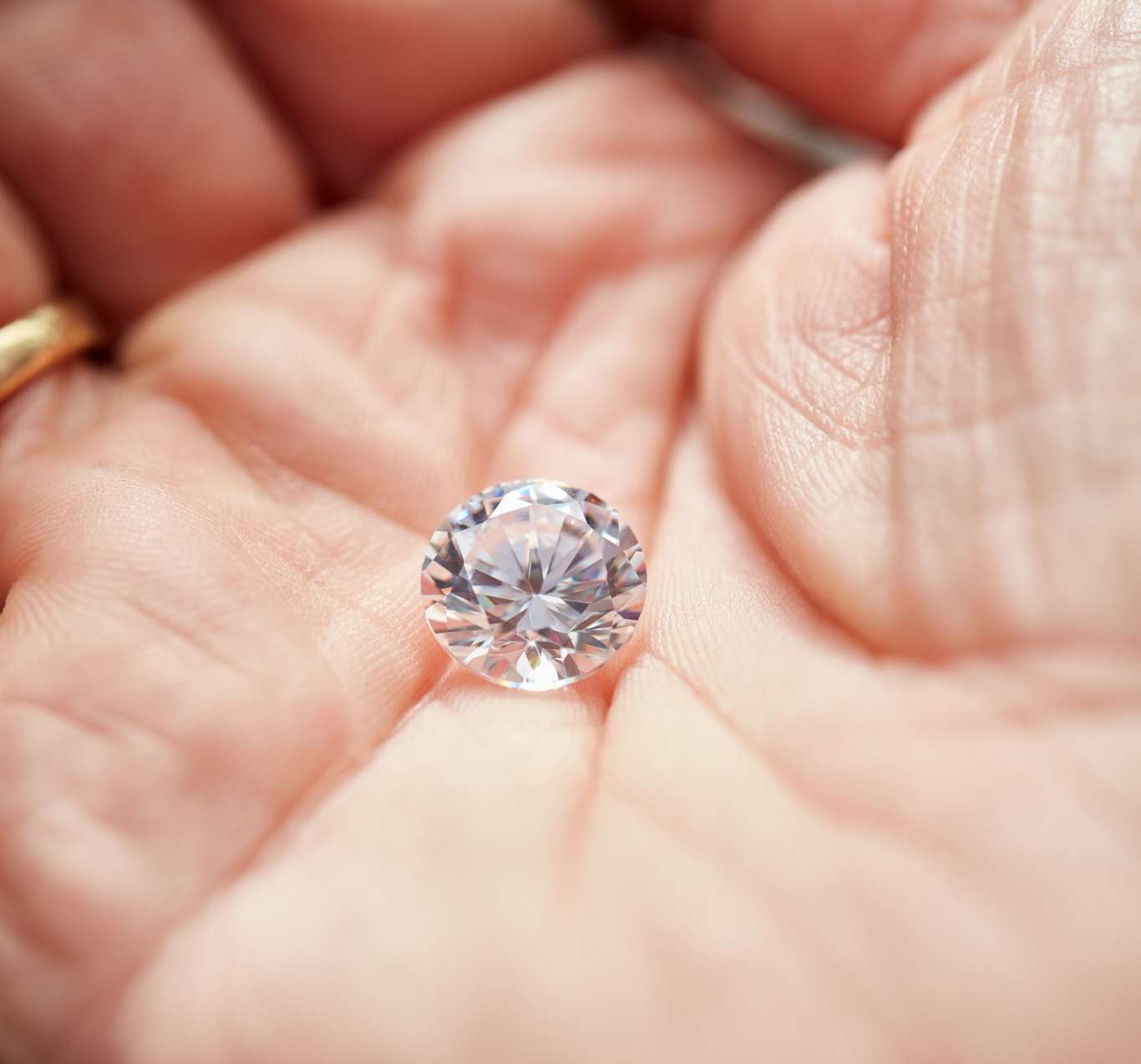
How is a Lab Grown Diamond Made?
Achieving diamonds of such beauty and authenticity calls for a carefully controlled environment of consistent heat and pressure. Each Evolution laboratory grown diamond is grown by placing a diamond ‘seed’ into a chamber. This chamber copies the natural growth process where crystallization occurs allowing a lab-grown diamond to grow within six to ten weeks. It is then cut and polished in the same process used for natural diamonds. The stones are then graded by respected laboratories such as IGI and GCAL.
Techniques
Creating Lab Grown Diamonds
Chemical Vapor Deposition (CVD)
Chemical Vapor Deposition, or CVD, is a process used to create gem-grade diamonds. The process is also used in the manufacture of optics and semiconductors. The CVD process uses ultra-pure carbon rich gasses in a controlled chamber. Typically, methane gas, which contains carbon, is heated until it breaks apart allowing the carbon atoms within the gas to separate. A diamond seed crystal attracts these tiny carbon atoms and they settle onto a diamond seed crystal. Over time layers of diamond build up resulting in a rough crystal. Evolution Lab Grown diamonds can take up to 3 months to grow and will yield gem-grade Type IIa diamonds.
High-pressure high-temperature (HPHT)
High-Pressure High-Temperature, or HPHT, recreates the environment present when a diamond grows naturally deep within the earth. The apparatus used reproduces the extreme heat and pressure present during natural diamond formation. The growth cell contains all the elements needed to grow a diamond, including a seed, highly refined graphite, a stimulus mixture and the required chemical elements. The molten stimulus solution causes the graphite within the cell to dissolve.
Once all the natural conditions are simulated, the cooling process begins. This incredibly controlled process occurs over numerous days and allows the carbon atoms to collect and grow upon the seed.

How to Identify a Lab Grown Diamond
Natural and lab grown diamonds have thermal conductivity properties. When using a hand held diamond tester, these properties differentiate them from cubic zirconia. Some lab diamonds, along with some natural coloured diamonds, may be mistakenly identified as moissanites when using certain diamond testers. This is due to the similarity in their electrical conductivity.
Gemmologists can typically distinguish between diamond and moissanite due to their differing refractive properties, with moissanites being double refractive and diamonds being single refractive. Diamond Certification Laboratories can distinguish between HPHT and CVD Lab Grown Diamonds.
Diamond Certification Laboratories use Infrared Spectroscopy to definitively separate Mined Diamonds from Lab Grown Diamonds.
Authenticity matters – which is why all certified lab grown diamonds feature a laser inscription confirming their laboratory origin. This certification ensures complete transparency, so you can always verify that your diamond is lab grown – giving you confidence in what you're buying and clarity when comparing options.
Evolution Lab Grown diamonds are of a purity that only 2% of mined diamonds are classified. At Whitakers, we offer a large selection of Type IIa Laboratory grown diamonds. Type IIa Diamonds are the purest form of diamond, making them brighter and harder than nearly all earth-mined diamonds. In the past, Type IIa diamonds have only been available to very wealthy collectors and individuals because of their rarity and extremely high prices.
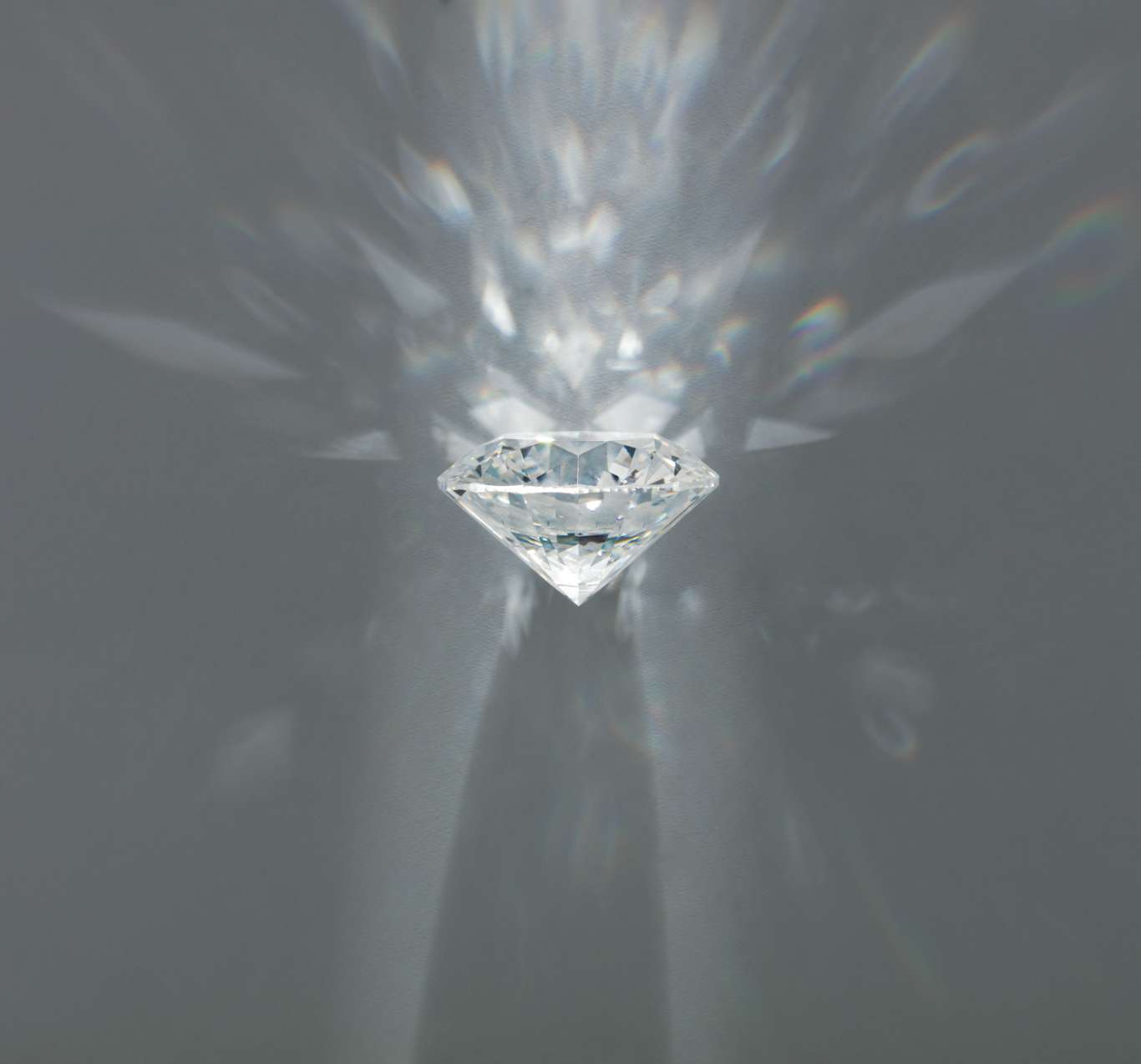
It's All in The Name
In July 2018 the Federal Trade Commission (FTC) in the United States allowed the term “diamond” to be legally used in the promotion and advertising of Lab Grown Diamonds. This was under the proviso that the descriptor ‘Lab Grown, Lab Created or Man-Made’ was used in conjunction with the word diamond when describing these stones.
Lab Grown Diamond companies advocated for the removal of the word “natural” and the FTC agreed, writing: “When the commission first used this definition in 1956, there was only one type of diamond product on the market—natural stones mined from the earth. Since then, technological advances have made it possible to create diamonds in a laboratory. These stones have essentially the same optical, physical, and chemical properties as mined diamonds. Thus, they are diamonds.”
Lab Grown Diamond Benefits
Incredibly Bright
Our collection of Evolution Lab Grown diamonds are available in a wide variety of colours and clarities. They exhibit the finest in crystal purity and sharpness which is typical of Type IIa diamonds.
Unbeatable Value
Evolution Lab Grown diamonds cost up to 40% less than their mined diamond equivalents. Be aware that some retailers sell “diamond-like” stones such as moissanite and cubic zirconia which are diamond coated or diamond simulants. These are not the same as Evolution Lab Grown Diamonds.
Conflict-Free Guarantee
All Lab Grown diamonds from Whitakers are guaranteed conflict-free and sourced from first world countries in partnership with the world’s most scientifically advanced diamond growers and cutters. All stones are certified by international, independent diamond certification laboratories. Each stone is laser-inscribed stating that it is a Lab Grown diamond. Each diamond has a personalized inscription number linking the stone to its accompanying certificate. The certificate will often detail the growth type which is either HPHT or CVD (as described above).
Superb Quality
Unlike other retailers, every Evolution Lab Grown diamond is Type IIa, the purest form of diamond. They are harder and more brilliant than Type Ia diamonds. Only 2% of earth-mined diamonds are of this quality. We only select the best Cut and Polished stones for our collection.



